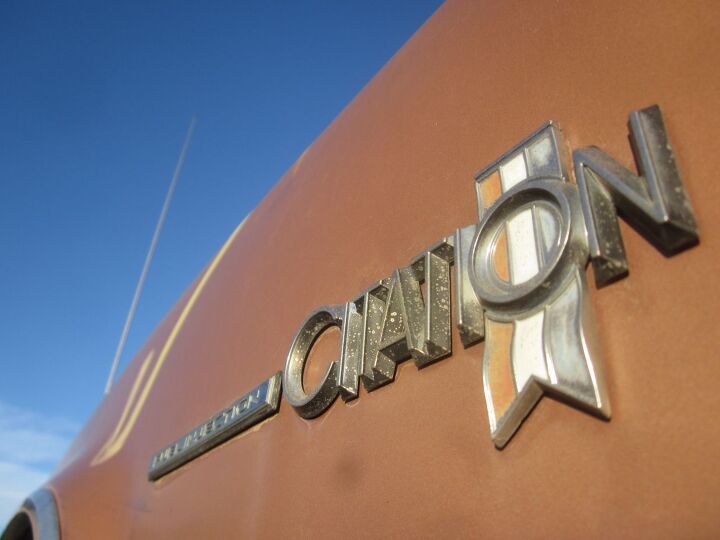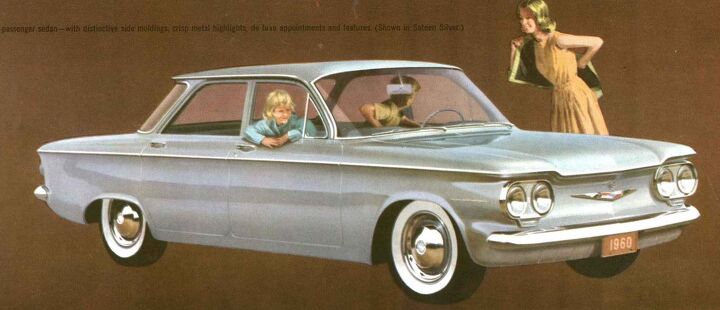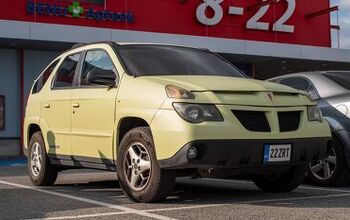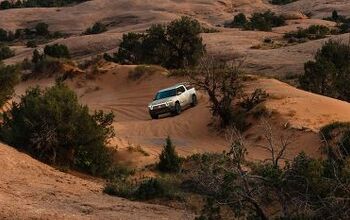Question: GM's Costliest Misstep?

The General’s downward spiral from its zenith as one of the most powerful and respected companies in America into Chapter 11 was an agonizingly slow affair, requiring decades and a fair number of billion-dollar miscalculations. Today’s question offers many choices: which GM vehicle caused the most damage to the company’s bottom line and/or image? I’m going to present a few examples from my own list, not necessarily in order of severity.
Because grabbing the photos for this piece allows me to spend a lot of time at one of my all-time favorite car websites, Old Car Brochures, I really enjoyed picking out my personal favorite examples of GM’s most painful mistakes (we’ll leave out such money-losers as GM’s ill-fated Wankel pursuit, because you can’t fault a company for making a seemingly good bet that doesn’t pay off, plus they got blind-sided by the Arab oil embargo on that one anyway). Let’s start with the Chevrolet Corvair. GM realized that Volkswagen was really onto something with its lightweight, hot-selling Beetle, and so its engineers got to work on an innovative air-cooled/rear-engined sedan that held six passengers and cruised in American-grade comfort. The car turned out pretty well, but a series of penny-pinching hardware decisions that made oversteer and rear-end-jacking problems (in the hands of American drivers accustomed to the behavior of cars that handled like combine harvesters) even deadlier than the Beetle’s gave the car a bad reputation soon after its launch. When Ralph Nader published his book (five years after the Corvair’s launch), GM’s ham-handed attempts to crush him torpedoed the company’s image as an icon of straight-shooting American business practices. The later Corvairs were fine cars, but nobody cared… and lasting damage had been done.
Many of us blame the cheapening of the Cadillac brand— which took GM most of the last decade to reverse— on the Cimarron, but I think the Cimarron just completed the process started by the Seville (actually, it started a decade earlier, with the bean-counter-inspired decline in build quality, but the Seville was the first Cadillac that really wasn’t a Cadillac). For the in-depth view, you’ll want to read Ate Up With Motor’s excellent account; the short version is that Cadillac’s pursuit of high numerical sales figures in the 1970s turned a brand that once struck fear into ritzy European luxury car makers into a company coasting on the image of past quality. The Seville was based on the same platform as the Chevy Nova; it sold pretty well, but it didn’t ride or last like a “real” Cadillac.
Then there’s the Vega. This car could have been the one that kicked the invading hordes of Japanese subcompacts out of the country. It looked great, it had a modern overhead-cam engine and good-handling suspension, and it was a genuine Detroit-designed machine instead of some sort of rebadged Opel. Vegas flew out of the showrooms in vast quantities… and then each one served as a rolling— or, in many cases, stationary— advertisement to avoid GM products, forever. The Vega was much heavier than originally envisioned, the aluminum-block engines with their unlined cylinders overheated and failed, the bodies rusted in a hurry, and GM-versus-Chevrolet Division politics virtually ensured that the company would never be able to make the Vega right.
The Fiero started out looking like a sure-fire hit, with its plastic body panels and inexpensive components sourced from off-the-shelf stuff GM had already designed, but then it ended up weighing 500 pounds more than planned, the miserable Iron Duke engine was installed, and the marketers shifted focus from a sporty car to an econo-commuter machine. Like the Corvair, the final Fieros were good cars, but nobody cared by that point.
This may sound like blasphemy, but I think the Pontiac GTO caused incalculable lasting harm to The General’s fortunes. That’s because the main lesson GM appears to have learned from this smash-hit car was that the car doesn’t matter— marketing is what counts! After the GTO, which didn’t cost much more to build than a regular Tempest but raked in fat profits, GM put more focus on marketing and less on car design, much like having John Delorean’s advertising savvy but without his engineering abilities. We saw the same process happen all over again with the super-luxu-SUV craze 30 years later.
My choice for the biggest GM misstep is the Citation. GM had to hit a home run with their first front-wheel-drive sedan that appealed to American tastes, which they’d needed ever more desperately as the 1970s ground on, and the Citation turned out to be a fundamentally terrible car that alienated the remaining customers that hadn’t already been scared away by the Vega. Chrysler was able to solve the puzzle with their K Cars and Ford hung on long enough to build the Taurus, but GM spent the decade of the 1980s taking repeated tire-iron blows to the face from Japanese competition. For this, I blame the Citation most of all. Your turn now. What’s your choice? The Aztek? The Allanté?

Murilee Martin is the pen name of Phil Greden, a writer who has lived in Minnesota, California, Georgia and (now) Colorado. He has toiled at copywriting, technical writing, junkmail writing, fiction writing and now automotive writing. He has owned many terrible vehicles and some good ones. He spends a great deal of time in self-service junkyards. These days, he writes for publications including Autoweek, Autoblog, Hagerty, The Truth About Cars and Capital One.
More by Murilee Martin
Latest Car Reviews
Read moreLatest Product Reviews
Read moreRecent Comments
- MaintenanceCosts I hope they make it. The R1 series are a genuinely innovative, appealing product, and the smaller ones look that way too from the early information.
- MaintenanceCosts Me commenting on this topic would be exactly as well-informed as many of our overcaffeinated BEV comments, so I'll just sit here and watch.
- SCE to AUX This year is indeed key for them, but it's worth mentioning that Rivian is actually meeting its sales and production forecasts.
- Kjhkjlhkjhkljh kljhjkhjklhkjh a consideration should be tread gap and depth. had wildpeaks on 17 inch rims .. but they only had 14 mm depth and tread gap measured on truck was not enough to put my pinky into. they would gum up unless you spun the libing F$$k out of them. My new Miky's have 19mm depth and i can put my entire index finger in the tread gap and the cut outs are stupid huge. so far the Miky baja boss ATs are handing sand and mud snow here in oregon on trails way better than the WPs and dont require me to redline it to keep moving forward and have never gummed up yet
- Kjhkjlhkjhkljh kljhjkhjklhkjh Market saturation .. nothing more















































Comments
Join the conversation
Late to the party as usual, but I think John Z. pretty much laid it out in "On a Clear Day..." Essentially, when Sloan reorganized GM he set it up so the divisions were semi-autonomous and the company was run by someone who understood what you had to do to make a car, with an accountant looking over his shoulder to ensure reasonable fiscal responsibility. This worked until the accountants eventually took near total control of the boardroom. Meanwhile, the '60s saw a huge proliferation of models, submodels, trim, and engine choices at a time when most of the divisions did not have the organizational skills and tools to manage parts inventory. So when the accountants got serious about cost containment the divisions were largely caught with their pants down. Bake this with a heavy seasoning of the hubris and tunnel vision in place within management at most levels, and you have a recipe for total disaster. DeLorean tells the story that the Vega debacle came from the fact that GM management essentially rammed the car down Chevy's throat and left the bowtie boys to figure out how to make it live up to the hype, creating so much resentment that most folks within Chevrolet wanted to sabotage the car. I agree with the previous posters that most of these cars are symptoms, not causes. The change from "making cars" to "making money" is a good summary. So I submit that GM's costliest mistake was allowing the balance of power at the top to become so inverted and insulated that the company could become disconnected from its mission.
http://farm4.static.flickr.com/3132/3725810509_e6ebca1dbf.jpg this is my answer. I believe this marks the point where it all started to go wrong.